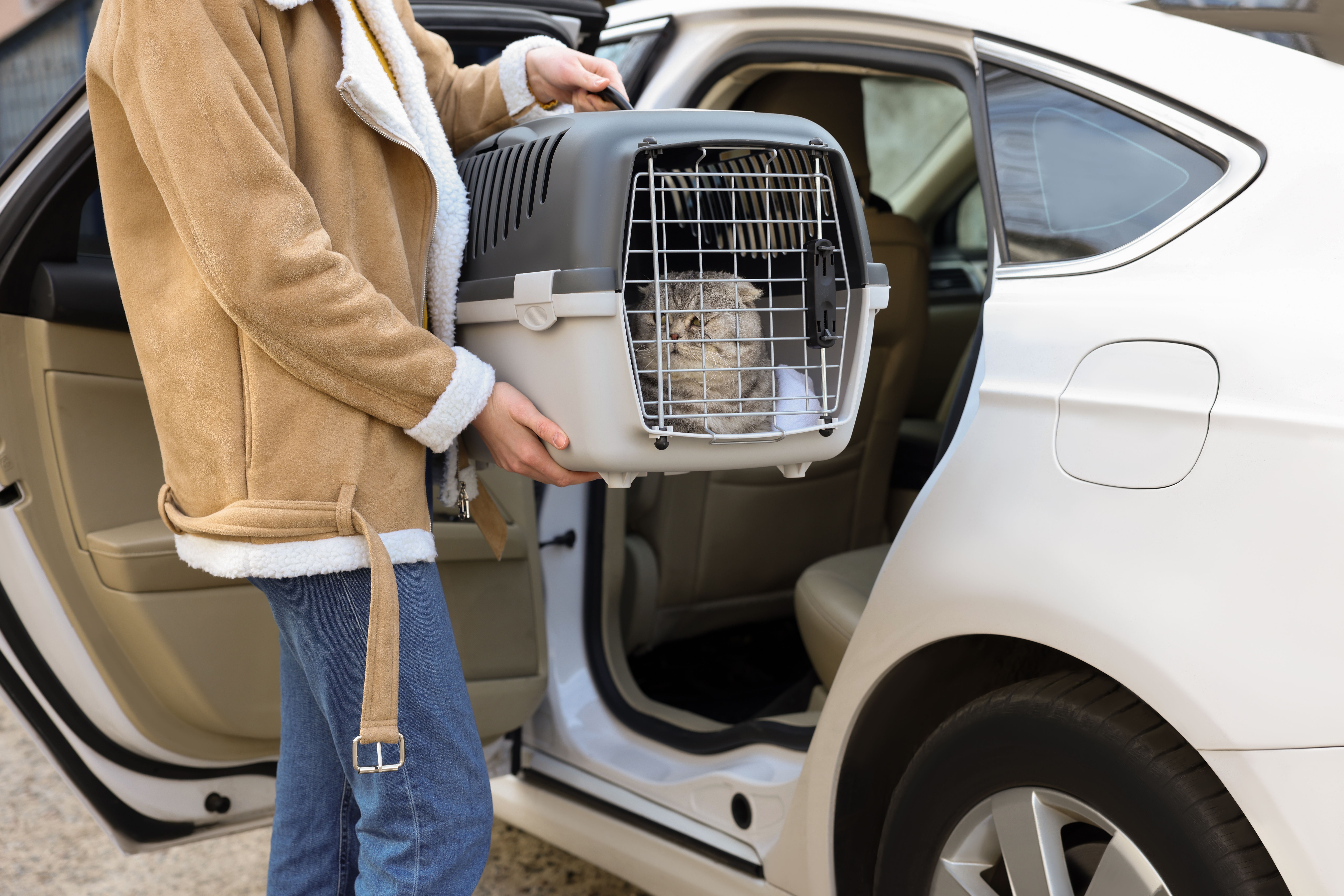Implementing low-stress handling at your practice
Traditional handling methods are being replaced by a more thoughtful and gentle approach.
New Africa/stock.adobe.com

A no stress environment is essentially impossible; however, a minimal or low-stress environment is realistically achievable. Low-stress handling is a method that focuses on reducing fear, anxiety, and stress during veterinary visits. Stress responses are related to several changes in hormonal and immune modulation and have been shown in many species to be related to disease processes and shortened lifespans.1 This recognizes that stress and fear compromise animal welfare and can hinder the medical care provided. Low-stress methods involve an understanding of animal behavior, appropriate handling techniques, and the ability to create a calm and relaxed environment. Achieving lower stress levels offers several benefits for patients, clients, and the healthcare team.
Client impact
Patient stress can have a direct impact on a client’s choice to actively seek healthcare for their pet or to watch and wait at home. The Bayer Veterinary Care usage study uncovered that many clients failed to bring their pets in for veterinary care to avoid the stress not only in their animals, but for themselves as well.2 This was true for routine care and pursuing medical help for sick pets. Postponing veterinary visits for sick or routine care means lost opportunities for disease prevention and early detection, potential long-term suffering with undiagnosed painful conditions, and missing out on treatments to improve quality of life and longevity. This can also weaken the bond between pets and clients as it can impact behavior such as a pet with a painful mouth shying away from their owner.
Veterinary team impact
Low-stress handling is not only safer for patients, but it also reduces the chance of injury to team members. Calm patients are less reactive and are more accepting of the physical handling necessary for exams and diagnostics. The fight or flight response is avoided, attempts to escape or eliciting defensive reactions such as biting and scratching are minimized. When pets are relaxed, forceful positioning is avoided, which decreases accidental injuries, especially in our more fragile or sick patients.
Low-stress methods
The good news is that transitioning to lower stress methods can be quite simple. An easy way to start is by dividing up the patient experience into categories and picking 1 or 2 ideas to implement monthly in each area. For instance, before the pet even enters the practice, the support staff can offer ideas on low-stress travel and veterinarians can prescribe pre-visit pharmaceutical (PVP) medications in advance to help minimize anxiety and motion sickness. Hospitals can install pheromone diffusers in patient facing areas, provide quiet spaces to wait away from other excitable pets, and offer a variety of high value treats upon entry.
Happy visits
At Heart + Paw Lake Hopatcong, the team regularly offers ‘Happy Visits’, which are short duration, no-pressure office visits paired with positive reinforcement. This can be extremely beneficial for establishing positive relationships early on for young patients and it helps deescalate the emotional state of our more reactive patients. ‘Happy Visits’ can be geared towards desensitization for office visits, physical exams, blood draws, etc.
Client participation
Client participation can also reduce patient fear. Avoid taking pets into “the back” to perform exams, blood draws, and administer outpatient treatments as separation can be extremely worrying for both clients and patients and exacerbate the stress responses. Staying in the exam room and having clients offer treats and praise during these procedures often results in more cooperative patients. This is a great way for the client to build trust with the team.
Reducing triggers
It is important to watch for stress-inducing triggers and use creative methods to work around them. For instance, most canine visitors are fearful of scales, which can create a lot of difficulty obtaining weights. A simple fix is to change the look of the scale area. Clinics can place a fluffy, washable dog bed over the scale, a couple of dog bowls with high value treats, and a faux grass border behind the scale. The less intimidating look will essentially eliminate the fear associated with the scale and allow veterinary teams to obtain accurate weights without the time-consuming, stressful struggle.
There are endless low-stress resources available for staff and client education. Simple steps and steady work towards your hospital goals, will result in a substantial impact in a surprisingly short period of time. With a little bit of effort and a lot of creativity, this can be a fun and collaborative project for all involved.
Reference
- Dreschel NA. The effects of fear and anxiety on health and lifespan in pet dogs. Appl Anim Behav Sci. 2010;125(3-4):157-162. doi:10.1016/j.applanim.2010.04.003
- Volk JO, Felsted KE, Thomas JG, Siren CW. Executive summary of the Bayer veterinary care usage study. J Am Vet Med Assoc. 2011;238(10):1275-1282. doi:10.2460/javma.238.10.1275
Jennifer Zanetti, CVT brings over 25 years of experience in the veterinary field to her role as Center Director at Heart + Paw in Lake Hopatcong, NJ. Driven by her love of medicine and passion for animal welfare, she became a certified veterinary technician in 2003 and transitioned into practice management in 2005. She is Fear Free Certified in avian and small animal veterinary techniques and has extensive animal behavior experience.